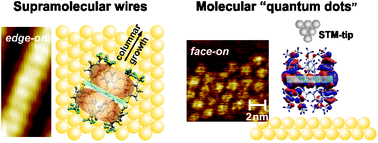Arylthio-substituted coronenes as tailored building blocks for molecular electronics†
Abstract
The electron transport through molecules in molecular devices is typically influenced by the nature of the interfaces with the contacting electrodes and by the interactions between neighbouring molecules. It is a major goal of molecular electronics to adjust the electronic function of a molecular device by tailoring the intrinsic molecular properties and the interfacial and intermolecular interactions. Here, we report on the tunability of the electronic properties of coronene derivatives, namely dodecakis(arylthio)coronenes (DATCs), which are found to exhibit a three-dimensional aromatic system.


 Please wait while we load your content...
Please wait while we load your content...